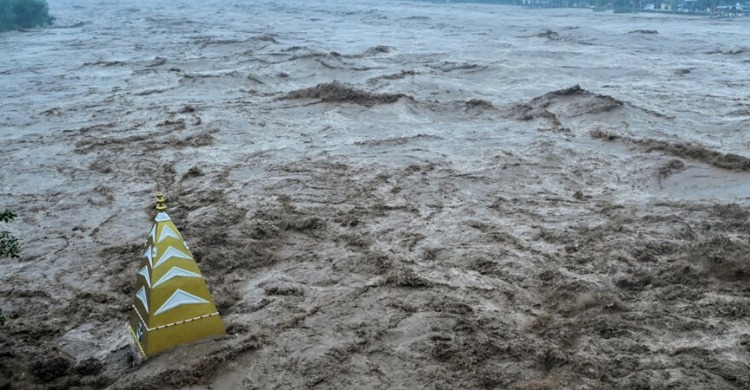Floods, landslides kill at least 11 in India's Jammu region


Floods and landslides triggered by record-breaking rain killed at least 11 people, including four children, in India's Jammu and Kashmir, officials said Saturday.
An intense monsoon rainstorm in the Indian-administered territory since Tuesday has caused widespread chaos, with raging water smashing into bridges and swamping homes.
A local disaster official told AFP that Ramban and Reasi districts were hit by heavy rainfall and landslides on Friday night, killing 11 people.
One child aged five was trapped in the debris and still missing, he added.
On Wednesday, a landslide slammed the pilgrimage route to the Hindu shrine of Vaishno Devi in Jammu, killing 41 people.
India's Meteorological Department said the torrential rain had smashed records at two locations in the region.
Jammu and Udhampur recorded their highest 24-hour rainfall on Wednesday, with 296 millimetres (11.6 inches) in Jammu, nine percent higher than the 1973 record, and 629.4 mm (24.8 inches) in Udhampur -- a staggering 84 percent surge over the 2019 mark.
Floods and landslides are common during the June-September monsoon season, but experts say climate change, coupled with poorly planned development, is increasing their frequency, severity and impact.
Climate experts from the Himalayan-focused International Centre for Integrated Mountain Development warn that a spate of disasters illustrates the dangers when extreme rain combines with mountain slopes weakened by melting permafrost, as well as building developments in flood-prone valleys.
Powerful torrents driven by intense rain smashed into Chisoti village in Indian-administered Kashmir on August 14, killing at least 65 people and leaving another 33 missing.
Floods on August 5 overwhelmed the Himalayan town of Dharali in India's Uttarakhand state and buried it in mud. The likely death toll from that disaster is more than 70 but has not been confirmed.
